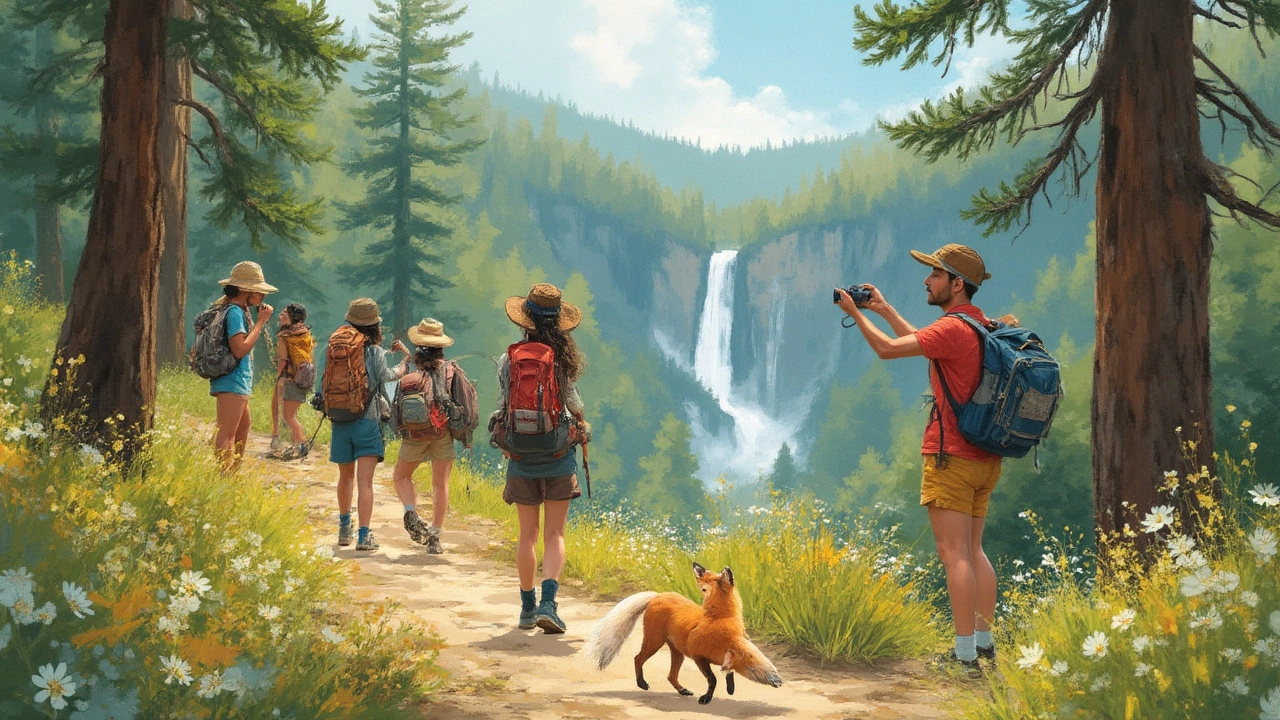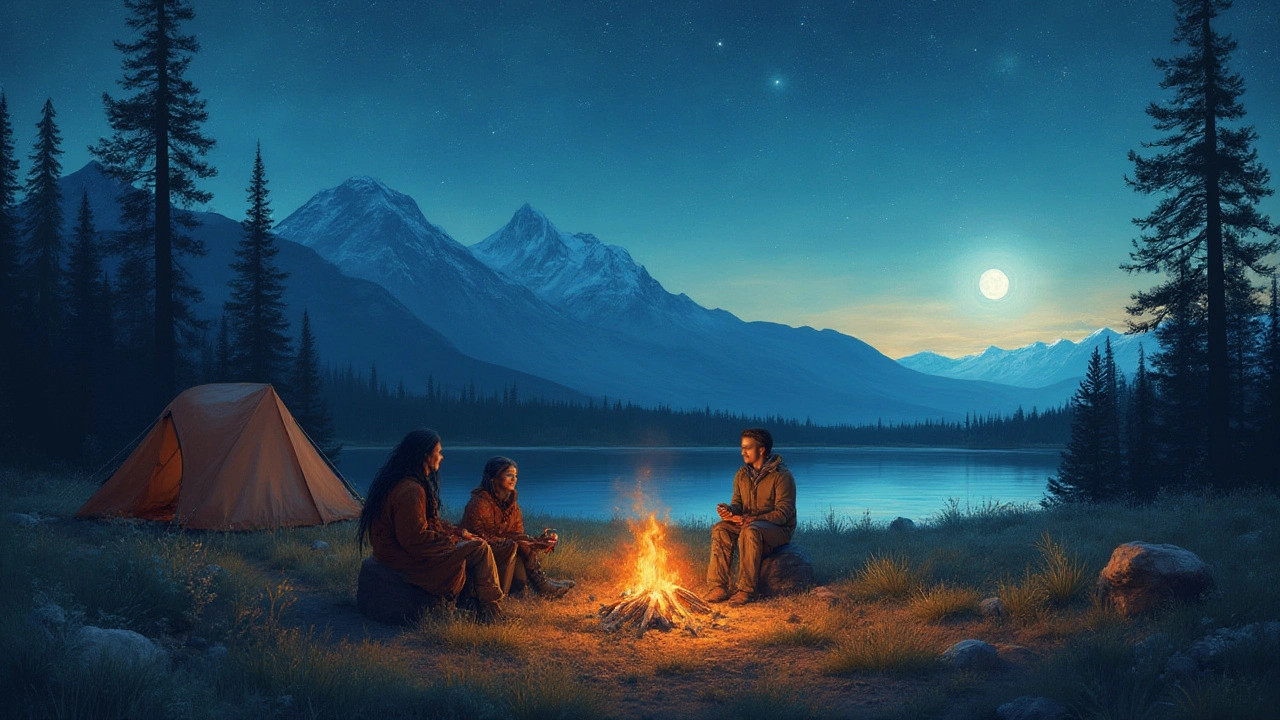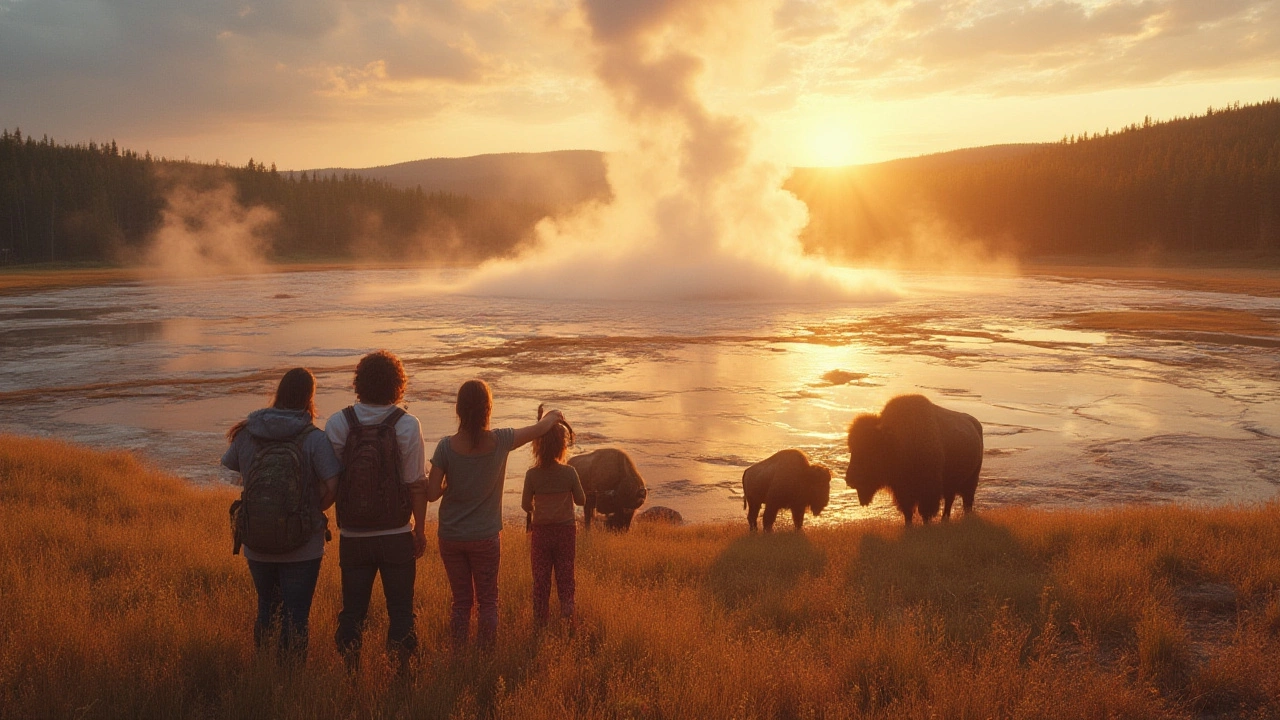Planning a trip should be fun, but choosing the best spot in the United States? That’s a real challenge. There are hundreds of famous choices—shiny cities, coastal escapes, mountain towns. Yet, there’s one place that has managed to tick all the boxes for travelers year after year: Yellowstone National Park. It’s not just a park. It’s like stepping inside another world, straight out of a nature documentary—only this time, you’re right in the middle of it.
What Makes Yellowstone National Park the Number One Vacation Spot?
People toss around “bucket list” places all the time, but Yellowstone really earns that status. Spread across Wyoming, Montana, and Idaho, this park holds the title for the world’s very first national park, born in 1872. Think about that—a whole 150+ years as a favorite. But it’s not just about age. Yellowstone’s greatest hits are the kind that blow your mind even if you’ve seen every travel Instagram out there.
Let’s start with the show-stealer: Old Faithful. Even if you don’t care much about geology, nobody can ignore this geyser when it sprays a column of boiling water up to 180 feet in the air with the regularity of a dependable grandparent’s alarm clock. Every 90 minutes, give or take, and people gather like it’s a rock concert. Over 500 active geysers dot Yellowstone, making it the world’s most concentrated field of these natural fountains.
And then there’s Grand Prismatic Spring. Imagine water in the bluest shades imaginable, ringed with bands of green, yellow, and fiery orange. The colors come from microscopic heat-loving bacteria—how’s that for science you can Instagram?
Bison herds still roam here like they did centuries ago, and elk, bears, and wolves live out their wild lives within easy sight of roadside trails. A fun fact? Bison cause more tourist injuries than bears here, mostly because visitors forget they're not petting zoos. Keep your phone’s zoom handy.
Yellowstone’s wilderness stretches for nearly 3,500 square miles, which means adventure comes in all shapes: hiking, camping, fly fishing, kayaking, and snowshoeing in winter. Every season brings a new personality. Late spring bursts open with wildflowers, but fall brings bugling elk and golden leaves. Summer attracts crowds, but the massive park never feels stuffed if you know where to roam. Just don’t roll in late without a plan—accommodations within the park book almost as soon as reservations open each spring.
There’s edge-of-your-seat drama too. The supervolcano beneath Yellowstone powers those steamy pools and geysers. It last erupted 640,000 years ago, but scientists closely monitor it, and the amount of seismic activity is wild. Earthquakes, while rare and mostly tiny, are part of life here. It’s nature with a pulse.
Best Things To Do in Yellowstone: Can’t-Miss Experiences
Start with a loop around the Grand Loop Road, a 142-mile circuit that reveals the park’s best features. It’ll take a day or two if you stop at every overlook (and you should). You’ll see the Lower and Upper Falls in the Grand Canyon of the Yellowstone—each drop is thunderous, and the colors in the canyon walls look painted by hand. The viewpoint called Artist Point is a no-brainer for your photo collection.
Geyser gazing is the highlight, but don’t stop at Old Faithful. Wander a few boardwalks farther and catch eruptions from Beehive, Castle, or Grand geysers. Some are unpredictable; sometimes you’re rewarded after a long wait, sometimes you’re not, but that’s part of the fun.
Canoe or kayak on Yellowstone Lake if you visit in summer. It’s one of the largest high-altitude lakes in North America. The water is cold but the scenery is pure postcard stuff. Anglers love the lake and river here, but you’ll need permits and barbless hooks—Yellowstone’s eco-rules are strict.
Animal lovers should set an alarm. Dawn and dusk are when the wildlife wakes up, especially in the Lamar Valley. This area is sometimes called the “Serengeti of North America” because you can spot wolves hunting, grizzlies grazing, and herds of bison on the move. Just remember to keep your car close—these are no ordinary animals.
If you visit off-season, winter transforms the park into a frosty fairy tale. Snowmobiles and snowcoaches replace cars. Steam rises off frozen rivers. Wolves leave tracks in deep snow. Spots like Mammoth Hot Springs look even wilder surrounded by ice. Some roads close to regular vehicles in winter but guided snow tours open up the quieter corners.
For families, the Junior Ranger Program is a winner. Kids get badges for completing activities, but grownups often learn something new, too. If you’re lucky, you’ll visit during a rare night-sky festival—park rangers point out planets with powerful telescopes and share stories about the stars over this enormous wilderness.

Insider Tips for Visiting Yellowstone and Beating the Crowds
A few solid tips can make the difference between “meh” and magical on a Yellowstone trip. First, book accommodations as early as humanly possible. Park lodges open reservations up to 13 months ahead and fill fast. If you miss out, West Yellowstone (on the Montana border) and Gardiner are close alternatives with plenty of hotels and cabins.
Most folks stick close to Old Faithful and the main loop. If you want breathing room, explore the north and east stretches. Tower Fall and the Northeast Entrance get fewer crowds, but the views are just as wild. Pack a picnic—there aren’t many restaurants inside the park, and snacking roadside is half the fun. Bring a reusable water bottle. Altitude sneaks up on you—the park sits at 7,000 feet or higher in many places.
Cell service is spotty at best, so download maps offline on your phone before you get in. Grab a paper map from the ranger station—yes, they still work wonders. Same goes for gas—the next station could be 50 miles away. No one wants to run out of fuel one grumpy bison away from help.
If you hike, tell someone your route and time, and never stray off marked trails. The ground can be fragile—sometimes only a thin crust covers boiling hot springs. Every year, rescue teams get called out for folks who want the perfect photo and get a bit too bold. Spoiler: park rules exist because the land is unpredictable.
Summer is busiest, but if you come in late May or September, you’ll dodge the big buses and avoid most of the summer heat. Evenings get chilly, no matter the time of year. Pack layers, sturdy shoes, bug spray, and a solid rain jacket. Yellowstone weather changes if you blink.
Wild Yellowstone: Fascinating Facts that Might Surprise You
Let’s drop in with some trivia for your next road trip game. Yellowstone houses half of the world’s geysers. The bison herds here are the oldest and largest in the US—free-roaming and descendants of ancient wild bison that never went extinct. The park also has its own “Grand Canyon,” carved out by the Yellowstone River over 10,000 years as glaciers retreated. No two views look the same, even if you visit a dozen times.
The Yellowstone supervolcano caldera beats beneath your feet—one of the most carefully monitored places on earth. Scientists have logged over a thousand earthquakes a year, mostly tiny, but that’s still more seismic energy than anywhere else in North America.
The park is fiercely protected, and that’s not just about big animals. Yellowstone is home to over 1,700 species of trees and plants, 285 species of birds, and nearly 70 mammals. You might stumble on wildflowers in late spring that exist nowhere else on the planet.
Hot springs here can reach 199 degrees Fahrenheit—so hot that nobody survives a plunge. Rangers tell tales about people boiling their socks (and losing shoes) in the steamy runoff, but don’t try that at home.
Yellowstone is one of the darkest places in the continental US after sundown, especially in the Lamar Valley. With no city glow for miles, the Milky Way looks like spilled sugar, and meteor showers light up the whole sky. Armies of bats emerge in summer evenings to snack on mosquitoes while wolves howl in the distance. It’s not the ordinary “vacation” soundtrack.
Want celebrity inspiration? Presidents from Theodore Roosevelt to Barack Obama have tread park trails. Documentary king Ken Burns called it "America’s best idea." The landscape made its mark on early explorers like John Colter, who hobnobbed with Lewis and Clark before wandering here alone.

Why Yellowstone Continues to Win Hearts—and How to Plan Your Dream Trip
What keeps people coming back? Every trip to Yellowstone is a little different. Some folks hike backcountry trails to escape technology and feel tiny beside a thundering waterfall. Others load up cameras to catch a glimpse of a wolf or a shimmering rainbow over a geyser. Families who camp here leave with stories that last a lifetime—and sometimes scars from a close encounter with a squirrel or a bison crossing the road.
There’s also something old-fashioned about the feeling here, like time runs just a tad slower. Wake up in a rustic cabin at sunrise, and the day stretches before you, full of wild possibility. If rain rolls in, you shelter under a pine with a thermos and watch storms pass. No rush, no endless rush of emails. At night, fire pits crackle and stars wheel overhead. You can almost forget the outside world.
Ready for your first (or fifth) trip? Map your route based on your interests—geyser hunters should stay near Old Faithful, wildlife fans will spend most time in Lamar Valley. Book in-park nightly stays as far out as possible. If you want to dodge the tourist traffic, time your trip for late spring or early fall.
Pack more than you think you’ll need, but leave space for souvenirs from the park gift shops—where you’ll find everything from bison-shaped cookies to hand-carved hiking sticks. Read up before you come. Grab a field guide to Yellowstone’s wildflowers, a guidebook to geology, or a memoir from a park ranger. They’ll make every trail feel like an adventure story. And remember: the magic lives in the details—whether it’s a marmot scampering by, or the sound of steam hissing through the earth below your boots.
When folks ask for the best US vacation, there’s always debate. The glitz of Las Vegas or the calm of Cape Cod? The drama of the Grand Canyon or the theme parks in Florida? But ask any traveler who’s ever stood wide-eyed at the edge of the Lower Falls, or heard a wolf howl on a cold twilight morning, and they’ll tell you: nothing else comes close to Yellowstone. Book your pass, pack those binoculars, and prepare for something unforgettable.
